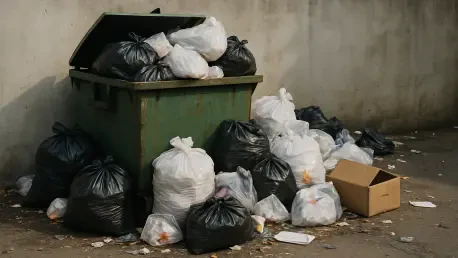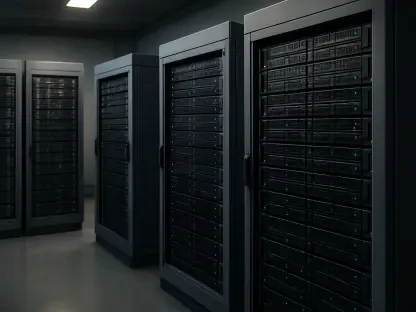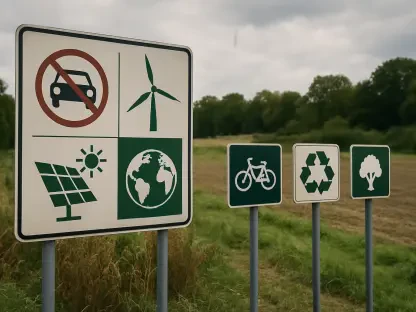Imagine moving into a new apartment in South Korea, excited to settle in, only to discover that a simple task like taking out the trash comes with a complex set of rules and potential fines of up to 1 million won for non-compliance, making it a daunting challenge for many newcomers. For off-post residents, understanding and adhering to the country’s stringent waste management regulations is not just a matter of courtesy but a legal necessity. These rules are designed to promote sustainability and maintain cleanliness, reflecting a national commitment to environmental responsibility. Each district and housing type may have unique guidelines, often requiring residents to consult landlords or local authorities to navigate designated disposal sites. Additionally, a critical reminder stands: off-post individuals are strictly prohibited from using on-post dumpsters, emphasizing the importance of following local protocols. This intricate system, while initially daunting, ensures that waste is managed efficiently, and mastering it is essential for anyone living in South Korea.
1. Understanding the Basics of Waste Regulations
South Korea’s waste disposal system is a well-structured framework aimed at minimizing environmental impact, but it requires diligence from residents to follow the rules correctly. Off-post residents must adhere to government-mandated guidelines that govern how trash is sorted and discarded. Failure to comply can result in significant penalties, underscoring the seriousness of these regulations. When moving into a new home, it’s vital to inquire with landlords about specific waste management practices, as they can vary widely depending on the location or type of housing. Each area typically has its own designated disposal sites, and understanding these logistics is key to avoiding mistakes. A crucial point to note is the strict prohibition against off-post residents using on-post dumpsters, a rule enforced to maintain order and accountability. Getting acquainted with these foundational aspects helps in building a routine that aligns with local expectations and prevents any legal or financial repercussions.
Beyond the initial rules, the importance of district-specific practices cannot be overstated in South Korea’s waste management system. For instance, the plastic bags used for general and food waste disposal are not universal; they are valid only within the district where they are purchased. These bags, available in various sizes at grocery and convenience stores, are a fundamental part of the process, ensuring that waste is tracked and managed locally. Prices for general waste bags range from 130 won to 2,000 won for capacities between 5L and 75L, while food waste bags, sized from 1.5L to 20L, cost between 40 won and 500 won. This localized approach means residents must be mindful of where they buy their supplies to avoid invalidating their efforts. Additionally, the variation in rules between apartments and individual houses adds another layer of complexity, requiring attention to detail. Grasping these nuances early on can save time and prevent the frustration of non-compliance with such a critical daily task.
2. Sorting Waste into Categories
Waste in South Korea is categorized into distinct types, each with specific disposal methods to ensure proper handling and recycling. General waste encompasses all non-recyclable and non-food items, requiring the use of designated bags for disposal. Food waste, often repurposed into animal feed or biogas, demands careful sorting to exclude inedible items like bones, tea bags, seeds, tough fruit peels such as pineapple, onion skins, corn silk, shells of various kinds, and toxic substances like pufferfish toxin, which must be discarded as general waste. Some apartments may allow food waste collection without bags, but this is not universal. Recyclables, another key category, must be sorted into bins at disposal sites or placed in transparent plastic bags if bins are unavailable. Items like paper, glass, metal cans, plastics, vinyl, and clothing each have specific preparation rules—such as cleaning, crushing, or removing labels—to facilitate recycling. This meticulous categorization is essential for maintaining the system’s efficiency.
Delving deeper into recyclables, the preparation of items before disposal is a critical step that residents must not overlook. Paper products, including boxes, newspapers, printer paper, flyers, and paper cups, should be free of contaminants. Glass must be emptied and rinsed, while metal cans need to be crushed, with gas canisters punctured and plastic lids separated. Plastics that are heavily soiled are directed to general waste, as are vinyl items with stickers or contamination. Clothing, on the other hand, can be donated through bins in residential areas for items like curtains, bags, and shoes, provided they are in acceptable condition; severely damaged pieces must go to general waste. These detailed requirements highlight the level of care expected in sorting, ensuring that materials are processed correctly. Large items, such as furniture or electronics, fall under a separate category of large-scale waste, requiring special stickers and procedures, which further illustrates the comprehensive nature of the waste management system.
3. Handling Large-Scale Waste Disposal
Disposing of large-scale waste, such as electronics or furniture, in South Korea involves a specific process that requires purchasing disposal stickers, with costs ranging from 2,000 to 20,000 won depending on the item’s size and weight. For example, a suitcase might cost 2,000 won to discard, while a piano could be around 15,000 won. Apartment residents should first check with their security office, as assistance with disposal might be provided. Stickers can be obtained from community service centers or district offices during operating hours of 9 a.m. to 6 p.m., Monday through Friday, where item details and pickup addresses are required. Alternatively, select convenience stores and supermarkets offer these stickers, with staff assistance available to select the correct option using item charts. Online purchases are also possible through district office websites by searching for “대형폐기물” (large waste), though this option is in Korean and requires a local bank account, often necessitating help from a resident.
Once the sticker is acquired, arranging a pickup service is the next critical step in the disposal of large-scale waste. This can be done by calling the number provided on the sticker or using online services, ensuring the item is collected from the designated location. The sticker must be visibly attached to the item, which is then placed at a specified site or in front of the residence for pickup. Given the risk of sticker theft, covering it with tape and taking a photo as proof is advisable, along with retaining the purchase receipt for records. A special provision exists for electronics, where free pickup is available, excluding furniture, with a minimum requirement of five small items. This service can be scheduled via phone at 1599-0903 from 8 a.m. to 6 p.m., Monday through Friday, or through a website, though both options are offered only in Korean. Understanding these steps ensures that large items are disposed of responsibly, aligning with South Korea’s structured waste management protocols.
4. Useful Korean Phrases for Waste Management
Navigating waste disposal in South Korea can be made easier by learning a few essential Korean phrases to communicate needs effectively. Key terms include “Sseu-le-gi” (쓰레기) for garbage, “Eum-sik-mul sseu-le-gi” (음식물 쓰레기) for food waste, and “Daehyeong-pyegimul” (대형폐기물) for large-scale waste. Other useful vocabulary includes “Jae-hwal-yong” (재활용) for recycle, “Bullisugeo” (분리수거) for separate trash, “Sseu-le-gi bongtu” (쓰레기 봉투) for garbage bag, and “Sseu-le-gi-tong” (쓰레기통) for trash can. These terms help in identifying and discussing various aspects of waste management when interacting with locals or authorities. Familiarity with this language not only aids in compliance but also demonstrates respect for local customs. Whether shopping for supplies or seeking assistance at disposal sites, having these words at hand can bridge communication gaps and streamline the process of waste handling in daily life.
For practical interactions, knowing how to request specific items related to waste disposal in Korean is equally beneficial. Phrases like “Sseu-le-gi bongtu juseyo” (쓰레기봉투 주세요), meaning “Please give me a garbage bag,” and “Eum-sik-mul sseu-le-gi bongtu juseyo” (음식물 쓰레기봉투 주세요), which translates to “Please give me food waste bags,” are invaluable when purchasing necessary supplies. For larger disposals, “Daehyeong-pyegimul sticker juseyo” (대형폐기물 스티커 주세요) means “Please give me a large waste disposal sticker,” and “Deo keun geollo juseyo” (더 큰 걸로 주세요) translates to “Please give me a bigger size.” These expressions facilitate clear communication with store staff or officials, ensuring that the correct items are obtained without misunderstanding. Mastering these phrases empowers residents to manage waste disposal tasks confidently, fostering smoother integration into the local community and adherence to regulations.
5. Reflecting on Compliance and Future Steps
Looking back, the journey of adapting to South Korea’s stringent trash disposal rules proved to be a learning curve for many newcomers. The intricate system of sorting waste into general, food, recyclable, and large-scale categories demanded attention to detail and a commitment to following district-specific guidelines. Fines of up to 1 million won served as a stern reminder of the consequences of non-compliance, while the prohibition on using on-post dumpsters for off-post residents reinforced the need for accountability. The process of purchasing designated bags, securing large waste stickers, and even learning basic Korean phrases highlighted the importance of cultural adaptation. Each step, from consulting landlords to scheduling pickups, played a pivotal role in maintaining the nation’s high standards of cleanliness and sustainability, reflecting a collective effort that was both challenging and rewarding to embrace.
Moving forward, residents should focus on building consistent habits to ensure ongoing compliance with South Korea’s waste management regulations. Creating a personal checklist for sorting trash and keeping a stock of district-specific bags can prevent last-minute errors. Exploring local resources, such as community centers or online forums, for updates on disposal rules will help in staying informed about any changes. For those less fluent in Korean, partnering with a local friend or neighbor for assistance with online services or communication can ease the process. Additionally, setting reminders for large waste pickups and safeguarding stickers against theft are practical measures to avoid complications. By integrating these strategies, the task of managing waste transforms from a daunting obligation into a seamless part of daily life, contributing to the broader goal of environmental preservation in South Korea.









